I wrote back in the blog post Thinking Too Big about narrowing down units to the best buck country. If you want to develop this skill, you need to learn to recognize big buck habitat.
When I first started hunting big mule deer, I spent too much time in unproductive country. As I’ve hunted longer, I’ve learned to recognize big buck habitat from desert to ag to high country. That skill helps me narrow down a big chunk of country to where I can focus my limited scouting time. Bucks, especially big mature ones, don’t just wander aimlessly, but live in relatively small areas. I’ve heard a square mile over tossed around over the years and I’d have to agree that is true in most rough country, especially high country. Bucks may roam farther around ag/desert country where water and food sources change more frequently. Either way, your job is to narrow down a unit that may be a hundred or more square miles down to the few miles the big bucks call home.
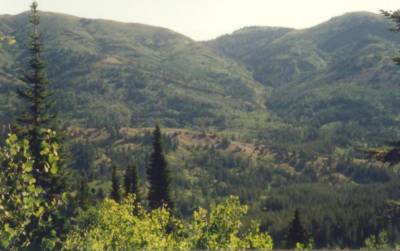

Above is some country where I’ve found some very big bucks- all the way to 230″! It’s an easy unit to get tags in, so there’s always some hunting pressure. However, it’s far enough from the road and steep enough to let a few bucks get beyond four-years old and grow big antlers. I won’t mention the state only because it doesn’t matter– I’ve seen this type of country in Idaho, Northern Utah, Western Colorado, Northern Nevada, and much of Wyoming.
I think the bigger, older bucks live in this type of country for several reasons.
1) High Quality Feed. I’ve rarely found big bucks where good feed isn’t abundant. Notice the big green hillsides. They are covered with all the herbs and browse deer prefer. Areas that have more rock than feed tend to have less bucks and smaller antlers. That’s not a hard-and-fast rule, but I’ve found it true most often.
2) Lots of timber. While I love hunting wide-open country where I can glass for days, so does everyone else. Bucks in wide-open country tend not to live as long unless something is limiting the harvest like private land or draw tags. Bucks in timbered country only have to venture a few yards out of the cover to feed and travel. They are only a jump away from safety if danger (you and me) presents itself.
3) Knobby. I don’t know if you’ll find that word in the dictionary, but I’ve learned over the decades that bucks like knobs where they can see a long ways and have multiple escape routes.
Here is a quick video from some recent scouting trips. I give some tips on particular kinds of habitat to look for bucks in. If you watch close, you’ll see a few good bucks, too!
Don’t miss out on the First Lite Merino starter kit! The odds of winning are great. See First Lite Giveaway!








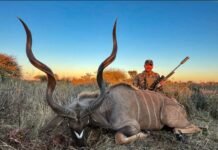





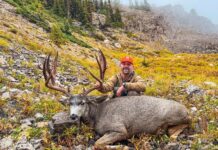
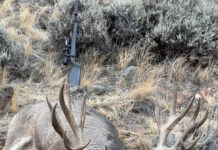
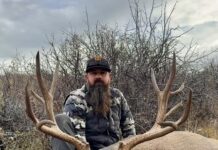



Always love reading your posts Robby. They are extremely informative. I’ve been out in the desert a lot lately and it got me to thinking about how to scout such an area. Surely there are big bucks worthy of scouting for in the sagebrush where there is no sight of a tree for miles. I believe your article Ag Bucks! would be extremely relavant in this situation, but any other advice on attempting to scout out in no man’s land?
Hi Garret,
several suggestions:
1) Find water, look for big tracks
2) If you dare, put out a trail cam on water source (give it a kiss, it might be the last time you see it)
3) Get a 12′ ladder and stand it in the back of your truck. CAREFULLY climb the ladder and glass. This works in Old Mexico deserts but they use elaborate platforms. True Rednecks can do it cheaper and more efficiently.
4) Give it time. There are few bucks in that country and it can take a few years to find them.
5) Always start around the Ag where the water and feed is.
6) If you have a friend with a plane, fly it. You probably won’t see bucks but you can find water and feed.
Comments are closed.